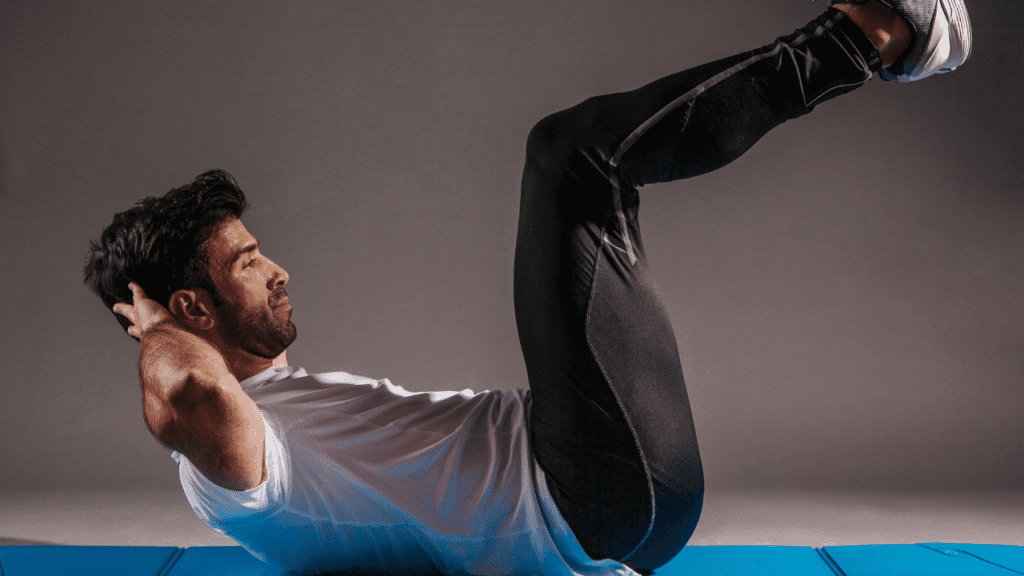How to Do Dead Bugs Correctly for Stronger Abs

What’s up, fitness fam! Ready to fire up your core and crush those abs? Today, we’re diving into one of the most underrated and most effective core exercises out there — the DEAD BUG! Yup, it may sound weird, but this move is a game-changer if you want to strengthen your abs, stabilize your spine, and finally get that strong, defined core. So grab your mat, find your space, and let’s break it down step by step. No fluff, just results. Let’s get it!
1: WHAT IS A DEAD BUG?
Let’s start with the basics. The Dead Bug is a core stabilization exercise that mimics the movement of a dying bug—arms and legs flailing in slow motion. But don’t laugh just yet. When done right, this controlled motion activates your deep core muscles, like your transverse abdominis, and helps you build serious midline strength. Unlike crunches that stress your neck and spine, dead bugs are low-impact, spine-safe, and extremely effective for beginners and athletes alike.
2: WHY DEAD BUGS WORK
Dead Bugs work because they target the core’s true function: stabilization. Your abs aren’t just there to look good. They’re meant to keep your spine safe while your limbs move. This exercise teaches your body to keep your spine still and stable while your arms and legs move around it. That means you’re training your core for real-world movements and building bulletproof abs in the process. Plus, it activates both sides of your brain—coordination for the win!
3: HOW TO SET UP PROPERLY
Alright, hit the mat. Lay on your back with your arms extended straight up toward the ceiling, and your knees bent at 90 degrees directly over your hips. Ankles are in line with your knees. Think of this as your tabletop position. Now, press your lower back into the floor. This is KEY. That core engagement will keep you stable and protect your spine. Breathe in deeply—we’re about to move.
4: THE BASIC DEAD BUG MOVEMENT
From your setup, slowly extend your right arm behind you and your left leg forward until both are just above the floor. Move slowly—this isn’t a race. Exhale as you extend. Then bring them back to the starting position. Repeat on the other side. The goal here is control. If your lower back starts to arch off the ground, pause and reset. That means you’re losing core tension. Keep the movement slow, smooth, and deliberate.
5: COMMON MISTAKES TO AVOID
Let’s talk about what not to do.
Mistake one: Arching your lower back. That means you’re not engaging your core.
Mistake two: Rushing the movement. Fast = sloppy. We want control.
Mistake three: Moving both arms or both legs at once. This isn’t a jumping jack. Stick to opposite arm and leg.
Lastly, don’t forget to breathe. Holding your breath messes up your rhythm and tension. Smooth breath, tight core—that’s the secret.
6: LEVELING UP THE DEAD BUG
Ready to make things spicy? Add a resistance band between your hands. As you extend your arm and leg, the band fights back, adding more tension and core activation. You can also hold a light dumbbell or medicine ball in both hands and keep it extended above your chest while doing the leg-only variation. These tweaks increase the difficulty and keep your muscles guessing. Remember: Challenge without compromising form.
7: DEAD BUGS FOR ATHLETES
Athletes love dead bugs for one reason: functional power. Whether you run, jump, punch, or throw, you need a strong core to transfer energy from your lower body to your upper body. Dead bugs teach that transfer through coordinated movement. Boxers, runners, CrossFitters—they all benefit from dead bugs because it builds deep strength without risking injury. Add it to your warm-up or core circuit. Game-changer.
8: DEAD BUG VARIATIONS TO TRY
Spice up your core game with these killer variations:
Weighted Dead Bug (light kettlebells or dumbbells)
Stability Ball Dead Bug (press a ball between hands and knees)
Wall Press Dead Bug (press hands into a wall behind your head while doing legs-only reps)
Pause Reps (hold fully extended position for 3-5 seconds) Each one forces even more control, coordination, and focus. Keep it fresh and your abs will thank you.
9: PROGRAMMING DEAD BUGS INTO YOUR ROUTINE
So how often should you dead bug? Start with 3 sets of 8-10 controlled reps per side, 3-4 times a week. You can throw it into your warm-up to wake up your core, or save it for the end of a workout as a burnout. Pair it with planks or hollow body holds for a killer core trifecta. And always prioritize quality over quantity. It’s not about doing 100 reps—it’s about doing 10 with laser focus.
10: RESULTS TO EXPECT AND FINAL TIPS
After a few weeks of consistent dead bugs, expect better posture, improved lower back health, and more defined abs. You’ll notice more stability in other lifts too—squats, overhead press, even pull-ups. Just remember, core training is a long game. Stay consistent, stay controlled, and keep challenging your body. Use a mirror, film yourself, or get feedback to stay sharp. Your abs aren’t just for show—they’re your body’s powerhouse.
And that’s a wrap! The Dead Bug is no joke when it comes to building real, functional core strength. Whether you’re a beginner or a seasoned gym rat, this move deserves a spot in your routine. So next time you hit the floor, don’t sleep on it. Master the dead bug, level up your core, and move like a beast.
Men’s trending fashion and how to look attractive. Here teaching fashion, so make sure to check it out.
Men’s Fitness tips, what you eat and how to stay fit your body. The best workout and best diet plan, so make sure to check it out.
Men’s lifestyle tips, how to live a better life, and changing your lifestyle tips, so make sure to check them out.
It cannot be denied that men have finally come to their senses when it comes to good grooming and fashion statement.
Men are also equally frustrated with bad hair days in their life, even though not as annoyed as women. Even though men have short haircuts, they also face problems in maintaining their hair.
There are no formulae for success but there are some successful entrepreneur tips that can help make things a little simpler.









